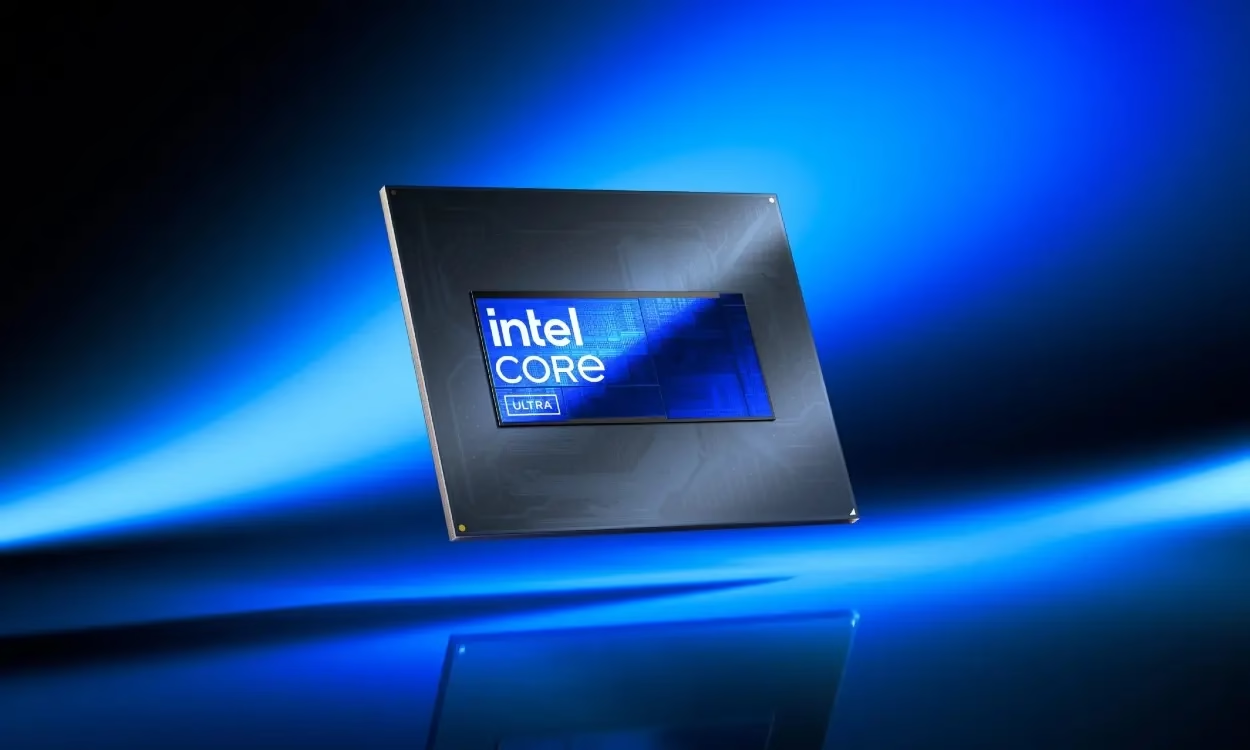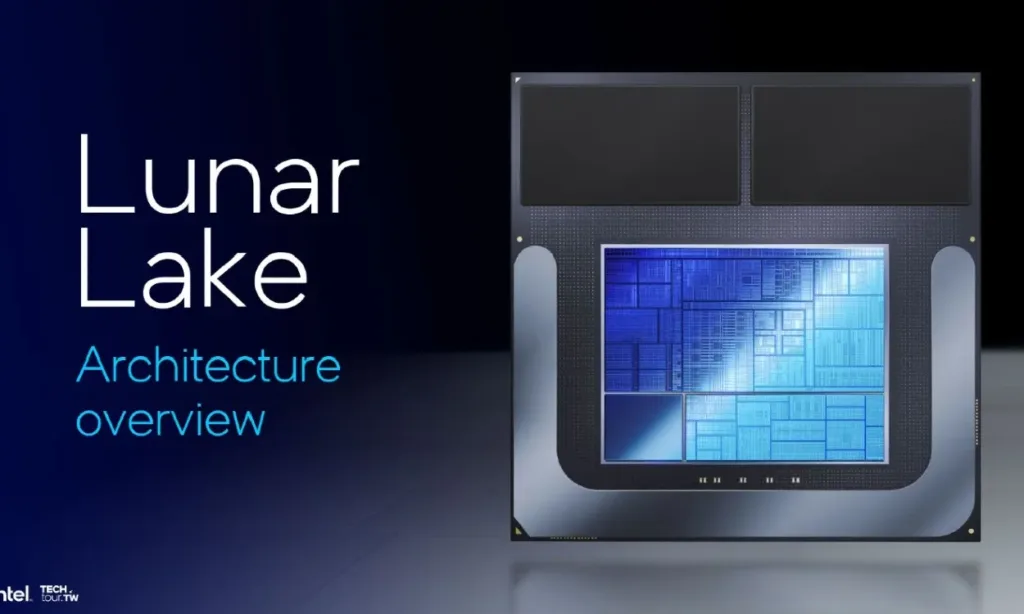
Intel has finally launched the next-generation Core Ultra 200V processors, codenamed Lunar Lake, in Berlin ahead of IFA. The new Lunar Lake architecture is designed to deliver competitive performance at ultra-low power levels for thin and compact laptops. With Qualcomm’s ARM-based Snapdragon X Elite now in the Windows PC ecosystem and making waves for its efficiency, let’s explore Intel’s Lunar Lake architecture and how it has been reengineered for greater efficiency.
Intel Lunar Lake Architecture
With last year’s Meteor Lake, Intel transitioned from its traditional monolithic design to a tile-based chip architecture, and Lunar Lake advances this concept further. Unlike Meteor Lake, where the Compute tile housed only the CPU and cache, the Compute tile in Lunar Lake processors integrates the CPU, cache, GPU, and NPU.
This means the Compute tile is the largest on the die, and notably, it is fabricated using TSMC’s N3B process node. While TSMC’s N3B has a lower yield than the newer N3E node, Intel’s shift from its own foundry to TSMC’s advanced 3nm process represents significant progress.
The platform controller tile, responsible for managing I/O and connectivity, is still built on TSMC’s 6nm (N6) node, just like Meteor Lake. This marks the first time Intel is designing its processor while TSMC handles manufacturing. Finally, Intel utilizes its own Foveros 3D technology for packaging the entire chipset.
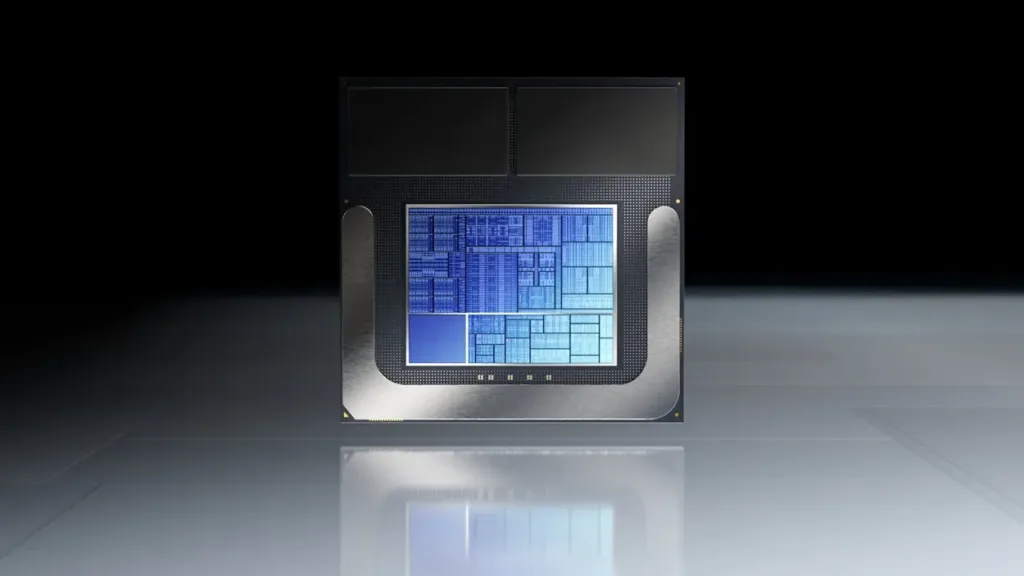
In addition, Intel has integrated memory directly into the processor, allowing for unified memory similar to Apple’s M-series chips on Lunar Lake. The on-package LPDDR5X-8533 RAM is offered in capacities of 16GB or 32GB, delivering memory speeds of up to 8,533 MT/s.
Overall, the Lunar Lake architecture has seen significant enhancements. The CPU, GPU, NPU, and cache are all part of the Compute tile, which is manufactured using TSMC’s 3nm (N3B) process node, promising improved efficiency. Finally, with memory integrated directly onto the SoC, power consumption is reduced, and bandwidth is enhanced.
At the Computex event, Michelle Holthaus, Executive VP and GM at Intel, stated, “We’re going to bust the myth that [x86] can’t be as efficient.” Intel asserts that the x86-based Lunar Lake processors reduce power consumption by an impressive 50% compared to Meteor Lake chips.
It seems Intel has taken significant steps to enhance efficiency with its Lunar Lake processors. Now, let’s delve into the new Lunar Lake CPU cores.
Intel Lunar Lake CPU
All Lunar Lake processors feature 8 CPU cores: 4 performance (P) cores called Lion Cove and 4 efficiency (E) cores named Skymont. As noted earlier, the CPU is integrated into the Compute tile. Intel claims that the Lion Cove P-core on Lunar Lake achieves a 14% IPC gain compared to the Redwood Cove P-core found in Meteor Lake.
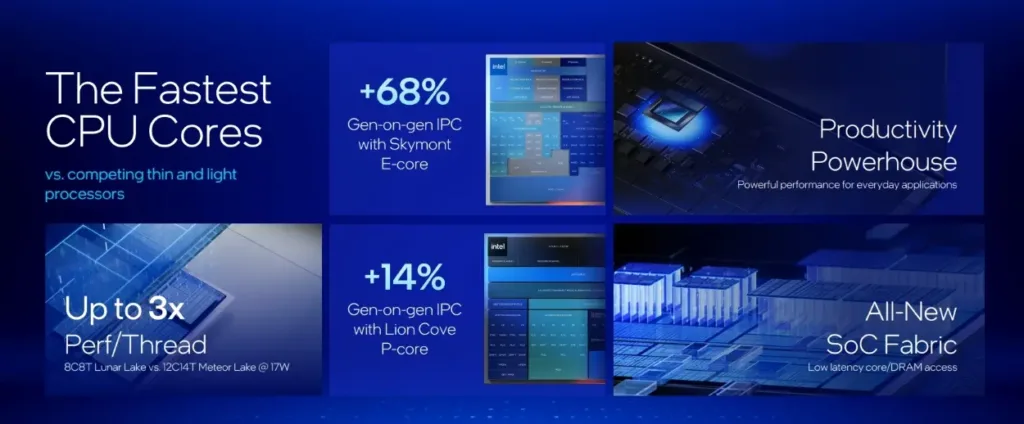
Intel has taken a bold step by completely eliminating SMT (Simultaneous Multi-Threading) from its processors for the first time in over two decades. Commonly known as Hyper-Threading, SMT enables a core to handle two tasks simultaneously. Intel claims that removing SMT improves performance-per-watt by 15%.
To make up for the absence of Hyper-Threading, Intel argues that Lunar Lake processors can execute more instructions per cycle rather than depending on parallel execution. This enhancement allows the processor to excel in single-threaded tasks.
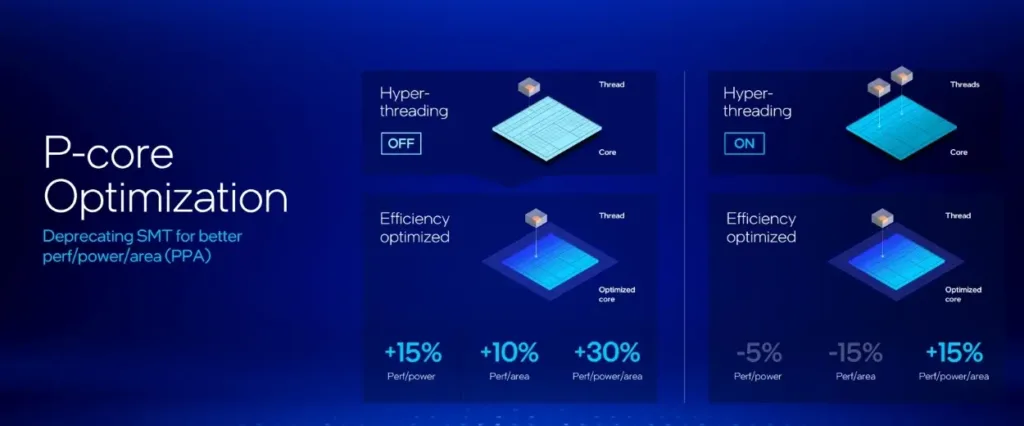
Now turning to the E core, Skymont stands out as a key feature of the Lunar Lake processors. Intel claims that Skymont delivers a substantial 68% IPC improvement over the Crestmont E core from Meteor Lake. The 4-core Skymont cluster operates independently in a ‘Low Power Island,’ complete with its own L3 cache.
As a result, Skymont requires only one-third of the power to achieve Crestmont’s peak performance. Overall, Skymont offers twice the performance of the Crestmont core in single-threaded tasks.

Additionally, Intel has introduced greater granularity in clock speed adjustments with Lunar Lake. Instead of increasing the clock speed by a fixed 100MHz, the Lunar Lake architecture can increment it by 16.67MHz, allowing for better management of the power budget for any task.
This reduced frequency interval results in lower power consumption. Overall, Intel claims that the Lunar Lake CPU can achieve the single-threaded performance of Meteor Lake while consuming only half the power, which is quite impressive.

Regarding competition, Intel claims that Lunar Lake processors not only match the performance-per-watt of the Snapdragon X Elite but also exceed it by 20% within the same power envelope, a bold assertion. Consequently, Lunar Lake processors offer around 14 hours of battery life during office productivity tasks, while the Snapdragon X Elite provides up to 9.5 hours, and the AMD HX 370 lasts up to 10.1 hours. It seems Intel has thoroughly re-engineered the Lunar Lake chipset to deliver impressive battery life, and we look forward to putting it to the test.
Lunar Lake Geekbench Score (Leaked)
While Lunar Lake is set to launch on September 24th, some Geekbench scores have already surfaced. The entry-level SKU, the Core Ultra 5 228V, scored 2,621 in the single-core test and 10,072 in the multi-core test. This 8-core CPU can clock up to 4.5GHz, with a default TDP of 17W and a maximum turbo power of 37W.
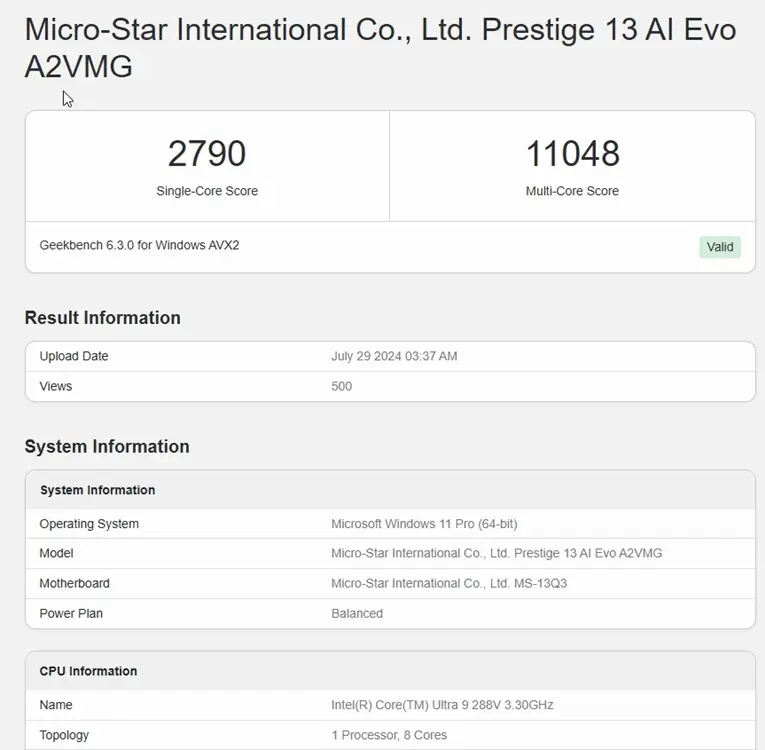
The highest-end SKU, the Core Ultra 9 288V, scored 2,790 in the single-core test and 11,048 in the multi-core test. In some runs, it even exceeded the 2,900 mark in single-threaded tasks. This SKU can reach up to 5.1GHz, with a default TDP of 30W and a maximum of 37W.
Intel Lunar Lake: New Xe2 GPU
The integrated GPU on Lunar Lake is based on the Battlemage graphics architecture and features 8 second-generation Intel Xe cores. It also features larger ray tracing units for improved gaming performance and real-time ray tracing capabilities. Additionally, for AI tasks, the new Lunar Lake GPU can perform 67 trillion operations per second (TOPS) on its own. That’s quite impressive, isn’t it?
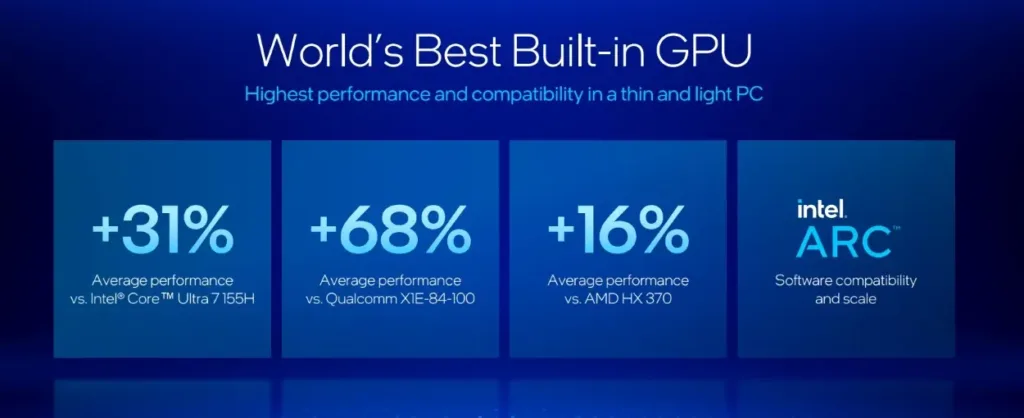
Compared to the Meteor Lake GPU, the Lunar Lake GPU is 31% faster while consuming half the power and provides up to 60% faster XeSS AI upscaling. It significantly outperforms the Adreno GPU on the Snapdragon X Elite, being 68% faster and 16% faster than AMD’s latest HX 370 GPU.
Additionally, its display engine can support three 4K HDR screens at 60Hz or a single 8K HDR screen at 60Hz. Finally, Lunar Lake processors support both AV1 encoding and decoding.
Intel Lunar Lake NPU
Much was said about Meteor Lake’s weak NPU, which could only execute up to 10 TOPS. However, with Lunar Lake, Intel plans to support a range of Copilot+ PCs for local AI workloads, with an update expected in November. The new Lunar Lake NPU 4 can perform up to 48 TOPS, surpassing Microsoft’s 40 TOPS eligibility ceiling for Copilot+ PCs.
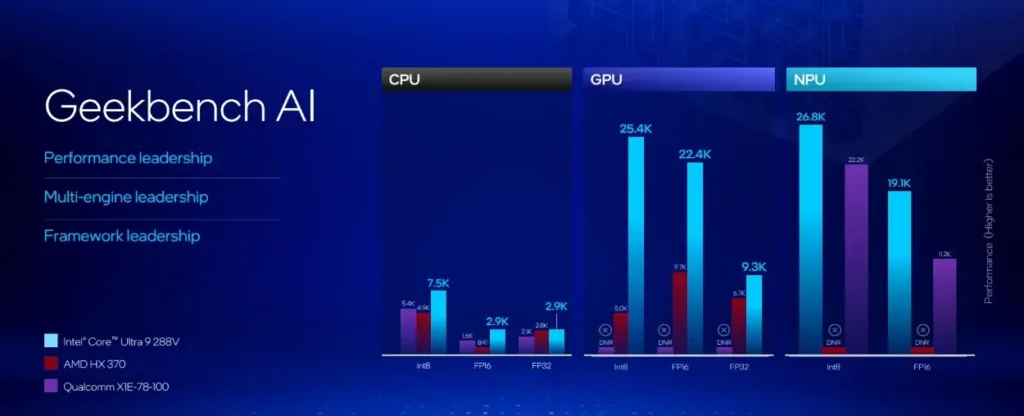
Overall, the processor can achieve an impressive total of 120 TOPS. The GPU contributes up to 67 TOPS, the CPU up to 5 TOPS, and the NPU up to 48 TOPS resulting in a combined total of 120 TOPS. This surpasses Qualcomm’s total processing capability of 75 TOPS on the Snapdragon X Elite. It’s important to note that these TOPS figures are based on the INT8 data type.
Intel Lunar Lake SKUs

Below, you can find all the SKUs of the Core Ultra (Series 2) processors based on the Lunar Lake architecture. There are nine different SKUs, each featuring eight CPU cores. The distinguishing factors include memory, CPU/GPU clock speeds, and NPU capabilities.
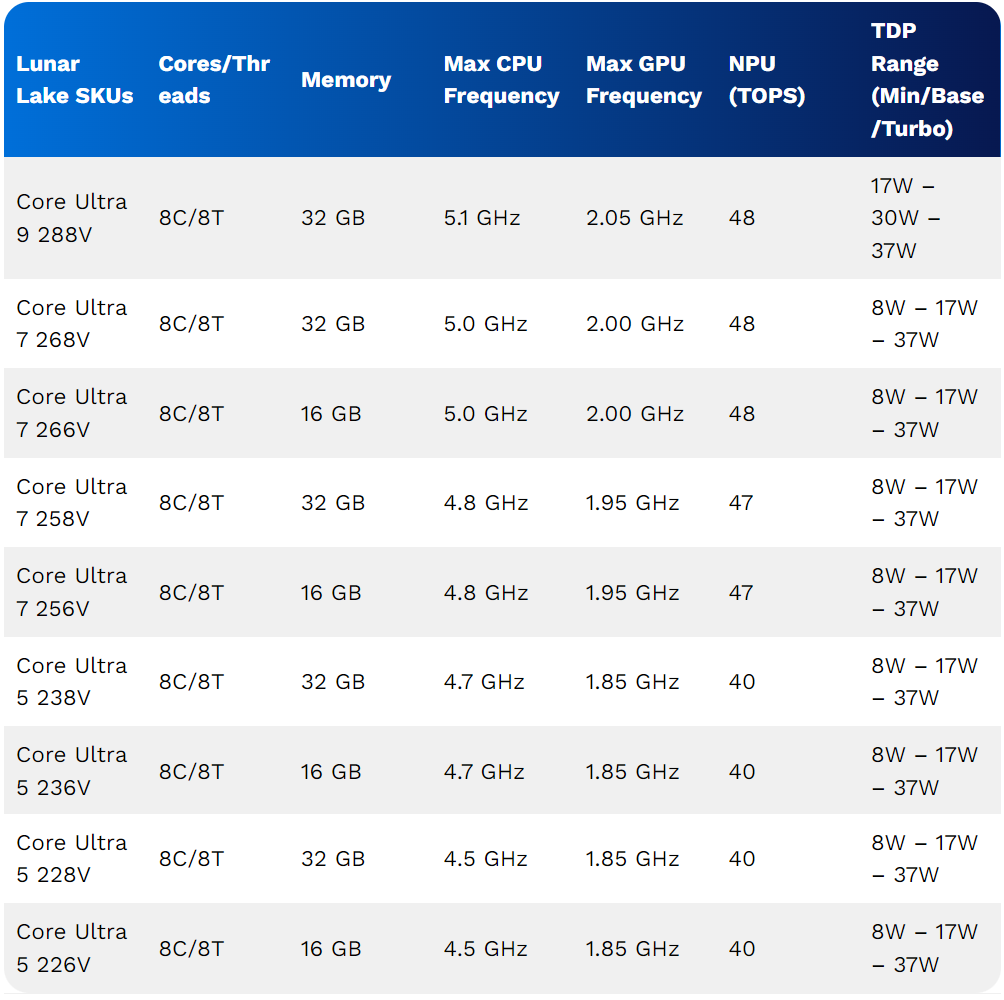
Intel Lunar Lake: Additional Improvements
As mentioned earlier, RAM is now integrated into the SoC, allowing the CPU, GPU, and NPU to access memory more quickly. With the memory physically closer to the Compute tile, bandwidth improves due to reduced latency, resulting in approximately a 40% reduction in power consumption.
However, with the on-package memory, users won’t have the option to upgrade or replace it, which some may find inconvenient. Additionally, Intel has enhanced Thread Director to better allocate tasks to the appropriate cores and is leveraging machine learning to provide improved guidance for the system scheduler.
The TDP range for Lunar Lake processors falls between 17W and 37W. Overall, I’m very excited about the Lunar Lake processors set to launch on September 24. It promises to be an exciting time for consumers as Intel competes with Qualcomm and AMD in the AI PC race, and we may finally see improved battery life in x86-powered Windows laptops.




